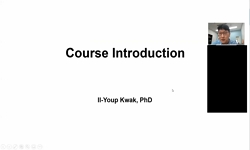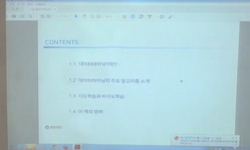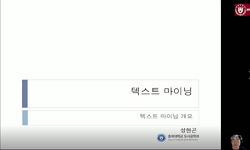본 연구는 메뉴 기반 사용자 인터페이스를 최적화하기 위한 데이터마이닝 기반 인터페이스 개발 방법(DaMIM: Data Mining-based Interface development Method)에 관한 연구로서 주요 내용은 DaMIM 절차의 제...
http://chineseinput.net/에서 pinyin(병음)방식으로 중국어를 변환할 수 있습니다.
변환된 중국어를 복사하여 사용하시면 됩니다.
- 中文 을 입력하시려면 zhongwen을 입력하시고 space를누르시면됩니다.
- 北京 을 입력하시려면 beijing을 입력하시고 space를 누르시면 됩니다.
https://www.riss.kr/link?id=A108497462
- 저자
- 발행기관
- 학술지명
- 권호사항
-
발행연도
2023
-
작성언어
Korean
- 주제어
-
KDC
505
-
등재정보
KCI등재
-
자료형태
학술저널
-
수록면
414-420(7쪽)
- DOI식별코드
- 제공처
-
0
상세조회 -
0
다운로드
부가정보
국문 초록 (Abstract)
본 연구는 메뉴 기반 사용자 인터페이스를 최적화하기 위한 데이터마이닝 기반 인터페이스 개발 방법(DaMIM: Data Mining-based Interface development Method)에 관한 연구로서 주요 내용은 DaMIM 절차의 제안과 검증으로 구성된다. DaMIM의 절차는 6단계로 대상 업무 정의, 사용자 선정, 자료수집, 데이터마이닝 기법 적용, 분석 및 평가, 대안 확정으로 제안하였다. 이 제안에서 데이터마이닝 기법으로는 군집분석을 사용하였다. 이후 이를 검증하기 위해 메뉴 선택 반응시간을 측정할 수 있는 프로그램을 개발하여 실험하였다. 실험은 메뉴 수에 따라 저밀도(9개), 고밀도(14개)로 구분되며 메뉴 구성 방법에 따라 알파벳순 방법(AM), 객체 지향적 방법(OM), 프로세스 지향적 방법(PM), 데이터마이닝 기반 방법(DM)으로 구분된다. 실험을 통해 측정한 시간을 일원배치 분산분석한 결과 저밀도에서는 메뉴 구성 방법별 메뉴 선택 반응시간이 통계적으로 유의한 차이를 보이지 않았다. 그러나 고밀도에서는 DM과 AM의 반응시간 이 가장 짧은 그룹으로 나타났으며, DM의 평균 반응시간이 가장 짧은 것을 확인함으로써 효과성을 검증하였다. 이에 본 연구에서 제안한 방법론은 사용자의 의견을 효과적으로 반영함으로써 인터페이스 설계의 객관화와 생산성 향상에 기여할 수 있을 것으로 기대된다.
다국어 초록 (Multilingual Abstract)
This study proposes and validates a data mining-based interface development method (DaMIM) to optimize menu-driven user interfaces. DaMIM comprises six steps—target task definition, user selection, data collection, application of data mining techniq...
This study proposes and validates a data mining-based interface development method (DaMIM) to optimize menu-driven user interfaces. DaMIM comprises six steps—target task definition, user selection, data collection, application of data mining techniques, analysis and evaluation, and determination of alternatives. Cluster analysis is used as the data mining technique. The proposed method is validated using a program developed to measure the reaction times of menu selection. The experiments are classified as low density (9) or high density (14) depending on the number of menus, and alphabetical method (AM), object-oriented method (OM), process-oriented method (PM), or data mining-based method (DM) are used for menu organization. The results reveal that statistically significant differences are not observed between the menu selection response times of the different menu organization methods at low density experiments, However, the response time of DM is the shortest in the high density case. Therefore, the effectiveness of DM is verified. The conclusions of this study are expected to contribute toward the objectification and productivity improvement of user-based interface design.
목차 (Table of Contents)
- 요약
- Abstract
- 1. 서론
- 2. 데이터마이닝 기반 인터페이스 개발방법론
- 3. 실험도구 개발
- 요약
- Abstract
- 1. 서론
- 2. 데이터마이닝 기반 인터페이스 개발방법론
- 3. 실험도구 개발
- 4. 실험 및 분석
- 5. 결론
- References
동일학술지(권/호) 다른 논문
-
Bow-Tie형식의 수평회전연결재를 이용한 프리캐스트 콘크리트 연결부 개발 및 해석적 성능 검증
- 한국산학기술학회
- 노정휘(Jung-Hwi Noh)
- 2023
- KCI등재
-
준지도 학습 모델을 사용한 차량 내부 네트워크에서의 이상 징후 탐지
- 한국산학기술학회
- 이현로(Hyunro Lee)
- 2023
- KCI등재
-
- 한국산학기술학회
- 안소연(So-Yeon An)
- 2023
- KCI등재
-
전기자동차 배터리 팩 SOC 추정 기반 Buck-Boost 능동형 셀 밸런싱
- 한국산학기술학회
- 남은택(Euntaek Nam)
- 2023
- KCI등재





 DBpia
DBpia






